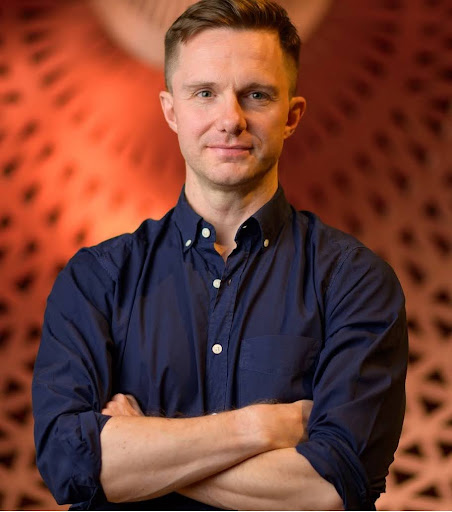by Mike Telin

“This is an example of how music and art can make a difference in how we talk about climate change,” organist James McVinnie said during a telephone interview. “It’s a piece that everyone, especially young people, should hear.”
On Thursday, April 4 at 7:30 pm at Severance Music Center, McVinnie will make his debut with The Cleveland Orchestra in Smith’s Breathing Forests. Under the direction of John Adams, the concert will also include Adams’ City Noir with saxophonist Timothy McAllister as soloist and Debussy’s Prelude to the Afternoon of a Faun. The program will be repeated on Saturday at 8:00 pm. Tickets are available online.
McVinnie said that the idea for the concerto began in 2014 when he met the Berkeley-born Smith at a Los Angeles Philharmonic concert conducted by John Adams. “I was playing on Philip Glass’s Symphony No. 12, and her Tumblebird Contrails was on the program. So this week is going to be kind of a reunion.”
The 30-minute concerto was premiered by McVinnie, conductor Esa-Pekka Salonen, and the L.A. Philharmonic in February 2022. Smith describes the piece as “a sonic forest, growing, breathing, burning, and regenerating, containing both sadness for the losses we can never get back, and joy — a celebration of forest ecosystems and their vital role in the fight against climate change, a celebration of all those participating in the fight for our future, and an invitation to get to work.”
Scored for large orchestra, Breathing Forests is made up of three contiguous movements — “Grow,” “Breathe,” and “Burn.” And while the piece may follow the fast-slow-fast model, McVinnie noted that it is not your traditional organ concerto. “In a way it’s a piece for two organs in that the organ is integrated into the orchestra, and the orchestra is integrated into the organ. It’s a beautiful piece that is very listenable in the best possible way.”
As an organist, McVinnie is used to every instrument he comes across having its own unique characteristics. When asked about Severance’s Norton Memorial Organ, built by E.M. Skinner, he said, “I’m standing next to it right now. I’ve had a few hours with it so I’ve got a good idea of how to proceed.” He added that the instrument has not been altered to take on Baroque characteristics.
Speaking of the Baroque, in a 2021 New York Times article titled “Five Minutes That Will Make You Love The Organ,” McVinnie said,
If I had a time machine, I would go back to 1740 to hear Johann Sebastian Bach play the organ in Leipzig, Germany. Bach is the ultimate composer for this extraordinary, timeless instrument. Much of his organ music is intense, revealing its multilayered, life-affirming majesty slowly, through repeated listening. The opening to his 29th cantata, however, leaps and bounds with immediate joy. There is something visceral about hearing this music played live, on a great organ, in a vast cathedral space: The building shakes, the air shimmers and the music is as much felt as heard.
Being English, McVinnie grew up in the Anglican tradition. He has held organ playing positions at St Paul’s Cathedral and Westminster Abbey, and has collaborated with Nico Muhly, Gabriella Smith, Tristan Perich, Tom Jenkinson/Squarepusher, artist Martin Creed, David Chalmin, David Lang, Richard Reed Parry, Bryce Dessner, Hildur Guðnadóttir, and Darkstar, who have written concertos and solo works for him. He directs the James McVinnie Ensemble, a collective of keyboardists who are dedicated to exploring works with political themes by contemporary and emerging composers.
“I have eclectic tastes in music,” he said.
Published on ClevelandClassical.com April 4, 2024.
Click here for a printable copy of this article



